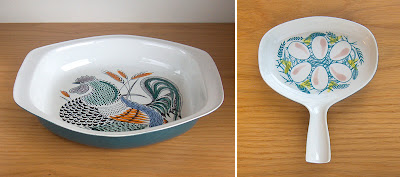In summer, I visited a local second-hand sale. After an hour searching through all the stalls, the only thing I bought was an old tin filled with buttons. The buttons cost just £1.00 but it was the tin that had caught my eye. Now December is here, I thought it would be good time to show it on the blogsite.
The tin is an old sweet tin, most likely from the 1950s or early 1960s. Produced for Mackintosh's Quality Street (still going strong today), the tin is decorated with some excellent vintage graphics. The colour combinations are perhaps not the most obvious, mid-blue, pale-yellow, pink and black but they somehow work together and they certainly evoke the era. A nice detail is the row of Christmas trees round the rim of the lid – remove the lid and another layer is revealed.
A nice tin. Sweet and quality, you could say.























